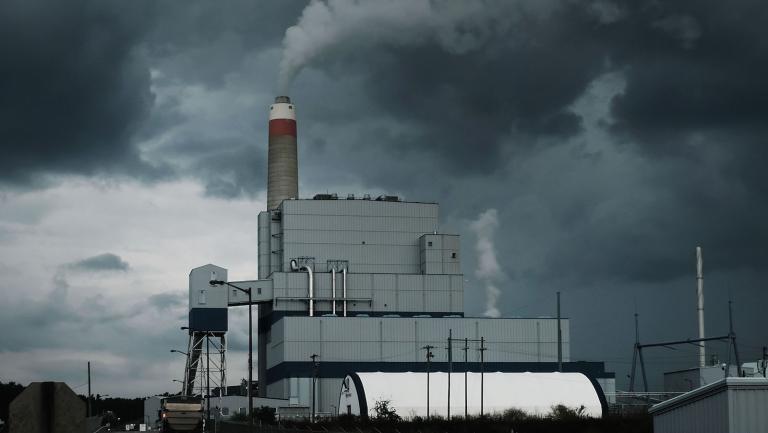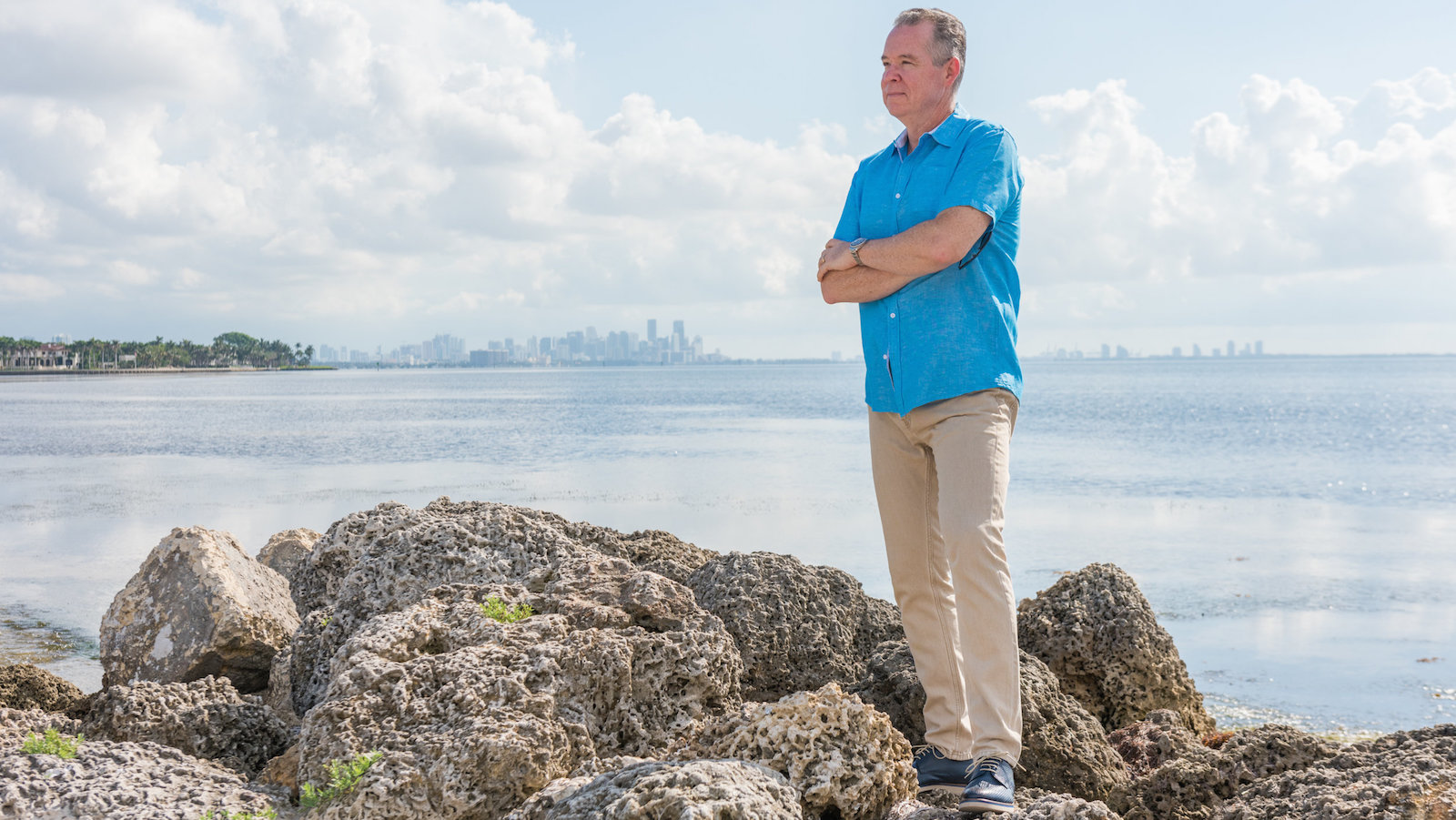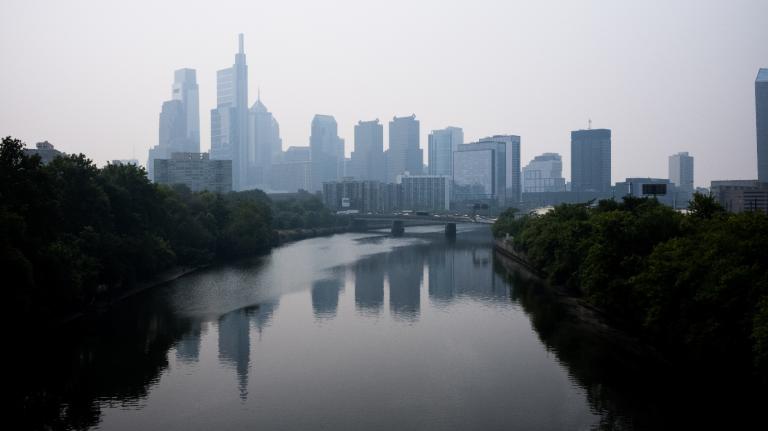This story was originally published by HuffPost and is reproduced here as part of the Climate Desk collaboration.
MIAMI ― John Morales is serious on camera and off, walking briskly from his green-screen at the NBC-6 studio to his office to edit forecast graphics. At 56, the meteorologist is tall and lean with silvery, neatly coiffed hair. You’d be hard-pressed to find images of him online in anything but his standard broad-shouldered charcoal suit.
That is, until September 2017. On the night before Hurricane Maria was expected to make landfall in Puerto Rico, where he grew up, Morales was at a national weather conference in California. He stepped aside in the ballroom, raised his iPhone shakily in his left hand and started broadcasting live on Facebook. He looked drained and disheveled. His eyes shifted from side to side. The title of the video was a plea for attention: “Importante mensaje para Puerto Rico. Cero ciencia.” Important message for Puerto Rico. Zero science.
In the six-minute broadcast, Morales begged viewers to leave the coastal areas of Puerto Rico and seek higher ground. He described how the wind howls and buzzes in a Category 4 or 5 storm, the likes of which the Caribbean island hadn’t seen in a generation — but it was something Morales could recall from when Hurricane Andrew made landfall in Florida in 1992. “I want you to be able to prepare your families,” he said, tears welling in his eyes. “I love you all.”
“I knew what they were about to see, nobody had ever lived through,” Morales reflected nine months later. “That’s what I was trying to get them prepared for.”
A year later, Puerto Rico is still struggling not just to rebuild but to acknowledge the full extent of the destruction. The official death toll has continued to rise — a recent estimate put it at 2,975, but researchers say it could exceed 4,000. Thousands of Puerto Ricans are still displaced in Florida, New York, and other states.
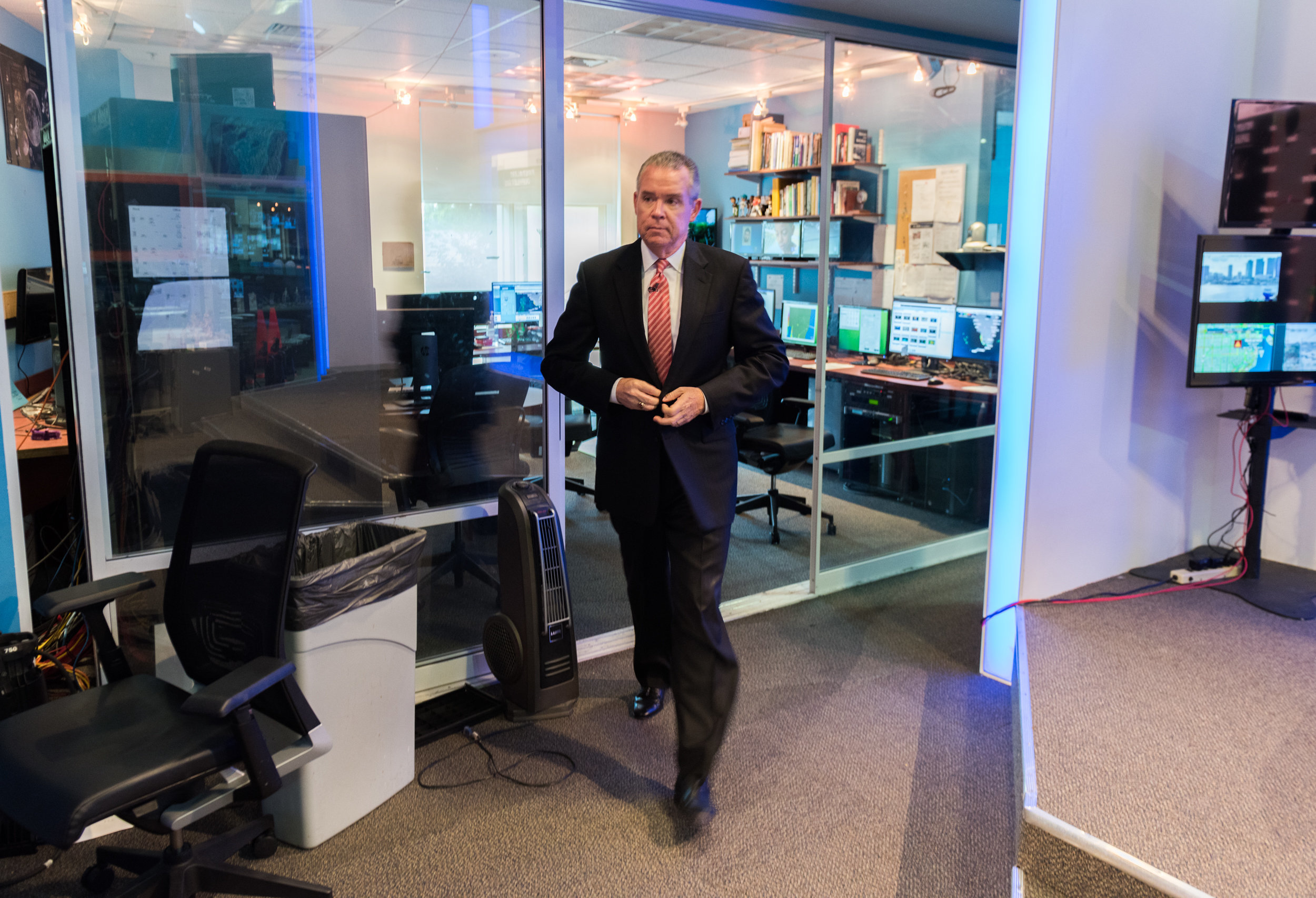
Chris McGonigal / HuffPost
For Morales, the storm marked a turning point. Decades of dutifully explaining the science of anthropogenic climate change on air in Spanish and English suddenly became an invaluable asset. He grew up in Puerto Rico. His octogenarian mother lived there. His friends were there. His business interests were there. For years, he had made personalizing global warming a mission, making him one of the first meteorologists — almost certainly the first bilingual one — to take on the issue at a time when weathercasters overwhelmingly rejected the consensus among climate scientists. But, that day, the abstract became breathtakingly real.
“This was the most emotionally difficult thing I’ve ever done in my profession, recording that video,” he said. “It was very hard.”
At a time when yet another historic storm is battering the region — Hurricane Michael already killed one person on Wednesday in Florida’s northern panhandle — weathercasters like Morales are becoming indispensable interpreters of a more chaotic, violent environment. Climate change remains taboo for many meteorologists, who often misunderstand climate science and shy away from a topic that, particularly in conservative states, is seen as political. But Morales is embedded and vulnerable, close enough to watch the climate crisis play out in real time but professionally distant enough to deliver the prognosis calmly, in words regular people can understand. It’s the sort of tight-rope act you see in the medical profession, not major-market television.
Explaining climate change and how it can affect weather is only going to grow more urgent and painful, especially in Miami. For now, anthropogenic warming remains context for how storms fit into long-term weather patterns. But the effects of climate change are already present. A study published in April found that home values along Miami’s coveted waterfront are starting to suffer. King tides, a term for exceptionally high tides, are flooding the city even on sunny days. And even if, down the road, scientists and policymakers discover a safe and reliable way to deploy geoengineering — chemically cooling the environment, sucking carbon dioxide out of the air or spraying light-reflecting aerosols into it — it won’t help Miami. The city sits atop a porous limestone. The water isn’t only coming from the shore; it’s rising from beneath the city itself.
“This is an existential threat,” he said. “Someday we’ll need to retreat from Miami Beach. But nobody gives it the serious level of thought.”
Morales lives in a chic one-story ranch house in Coconut Grove, a leafy, suburban neighborhood that hugs the northwest shore of Biscayne Bay. The house is well suited for the solar panels he had installed on the roof — it’s sunny and free of tree canopy — and his dark-blue Tesla Model 3 sits in the driveway. Morales said he chose the place largely because it sits atop Miami’s tallest ridge, at roughly 13 feet above sea level.
“My particular house is 15 feet above sea level,” he said, attributing the bump to the foundation.
If Morales’ personal preparedness for climate change is notable, his professional focus is even more so. For nearly two decades, Morales has made global warming a regular part of his broadcasts. He’s published in-depth analyses on the connection between climate change and superstorms on NBC’s website, has used his platform to highlight the latest climate research, and regularly lectures college students on atmospheric science.
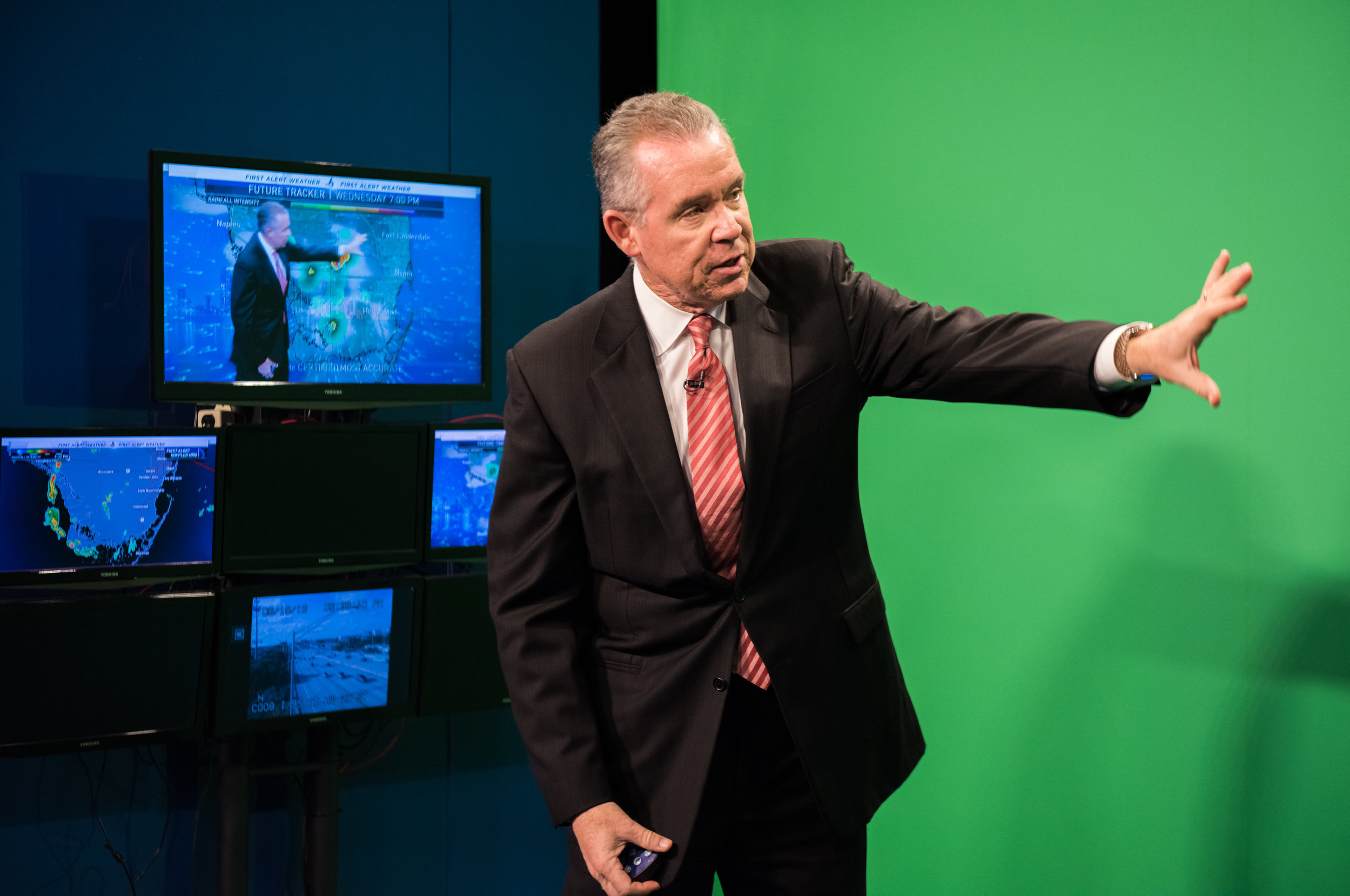
Chris McGonigal / HuffPost
“You know, TV weather consultants do not want us to talk science on air, and they don’t let us put cold fronts and things like that because they think that you don’t understand those things,” Morales said during a forecast of Hurricane Matthew, a Category 5 storm that hit the southeast in October 2016. “But I know you do, because you are a very sophisticated television audience, especially when it comes to these things, because you know living here in South Florida that we must deal with these hurricanes all the time.”
That same summer — as fears over Zika forced stark travel advisories for would-be parents and images of microcephaly-stricken babies with shrunken, deformed heads captured international attention — Morales broadcast a package on how climate change spread mosquitoes farther north.
“As global warming continues across the world, the days that are prime for breeding and thriving for mosquitoes continue to expand,” Morales said, opening his segment matter-of-factly. “Across the country, there are many cities that have seen significant increases in the number of mosquito days per year.”
Last December, when President Trump mocked climate science, tweeting that New York’s coldest New Year’s Eve on record proved “we could use a little bit of that good old Global Warming,” Morales debunked that pseudoscientific logic in a succinct, 45-second segment. Standing in front of a map that showed above average temperature almost everywhere else on Earth, Morales said, “the only place that’s running very, very cold across the planet is North America.”
“This is a weather phenomenon, where we have the jet stream bringing cold air down from the Arctic,” Morales said. “It is not a climate phenomenon, it’s a weather phenomenon. What is a climate phenomenon is global warming and climate change — which is real, and certainly not a hoax.”
Morales gets recognized. On a June morning, driving into Matheson Hammock Park, just south of Coral Gables, Morales rolled down the window of his car to explain to the ticket booth employee that he was not parking, just driving through. In Spanish, he introduced himself, and she smiled knowingly and let him in.
Morales made waves earlier this year when he turned down an invitation to speak alongside a representative of the Heartland Institute, a prominent climate denial think tank funded by right-wing billionaires.
“I strongly feel that we must find ways to improve scientific literacy in the Americas, and especially in the United States,” he said in a letter turning down the invitation. “The Keynote Conversation you propose would not serve that purpose well at all.”
His zeal for talking about climate change stands out among television meteorologists. While they are often the only scientists average Americans see regularly, meteorologists are notoriously skeptical of the overwhelming consensus that climate change is caused by emissions from fossil fuels, farms, and deforestation. In 2010, only half of the 571 weathercasters George Mason University surveyed believed global warming was even happening, while a quarter called it “a scam.”
Just 46 percent of broadcast meteorologists said they believed human activity “primarily or entirely” caused climate change over the past 50 years, according to a 2016 George Mason University survey. That is starting to change, as global warming-related stories increased 15-fold after the past five years. But, by contrast, 97 percent of peer-reviewed climate scientists attribute warming to human activity. A research review published in 2015 found significant flaws in the methodologies, assumptions, or analyses used by the 3 percent of scientists who concluded otherwise.
“What’s unique about John is that he talks about climate change on the air,” said Marshall Shepherd, director of the University of Georgia’s atmospheric program and a former president of the American Meteorological Society. “John is in a center- to center-right state in Florida. He proves you can talk about climate change without alienating your audience or being political.”
Morales was born on May 13, 1962, in Schenectady, New York. His parents’ marriage took a turn shortly thereafter, as his father struggled with schizophrenia and paranoia. The story Morales always heard was that his father had left him unattended in a bath. His mother, Inés “Dolly” Morales, feared for her infant son, and while she was heartbroken to leave the man she loved, she decided to take young John to Puerto Rico to raise him among her family.
On the island, water became a delight. Morales spent his childhood swimming in warm, azure water. He was dazzled by the clear blue skies of day and the canopy of stars at night, and considered careers in astronomy or piloting. But in 1979, Hurricane David, a Category 5 storm, struck the Caribbean, killing thousands in the nearby Dominican Republic.
“I remember staying up all night to observe the weather and track every detail of the storm, getting my info from NOAA Weather Radio,” he said. “I found a way to speak to the meteorologist in charge of the National Weather Service Forecast Office in San Juan, who encouraged me to pursue the career.”
After graduating from Cornell University with a degree in atmospheric sciences in 1984, he took a job as the National Weather Service back home in Puerto Rico, working his way up to lead forecaster by age 27. He soon began moonlighting as a deejay, flying to Christiansted in the U.S. Virgin Islands, where the station Isle 95 paid him a few dollars an hour to curate his favorite Talking Heads and Tears for Fears tracks.
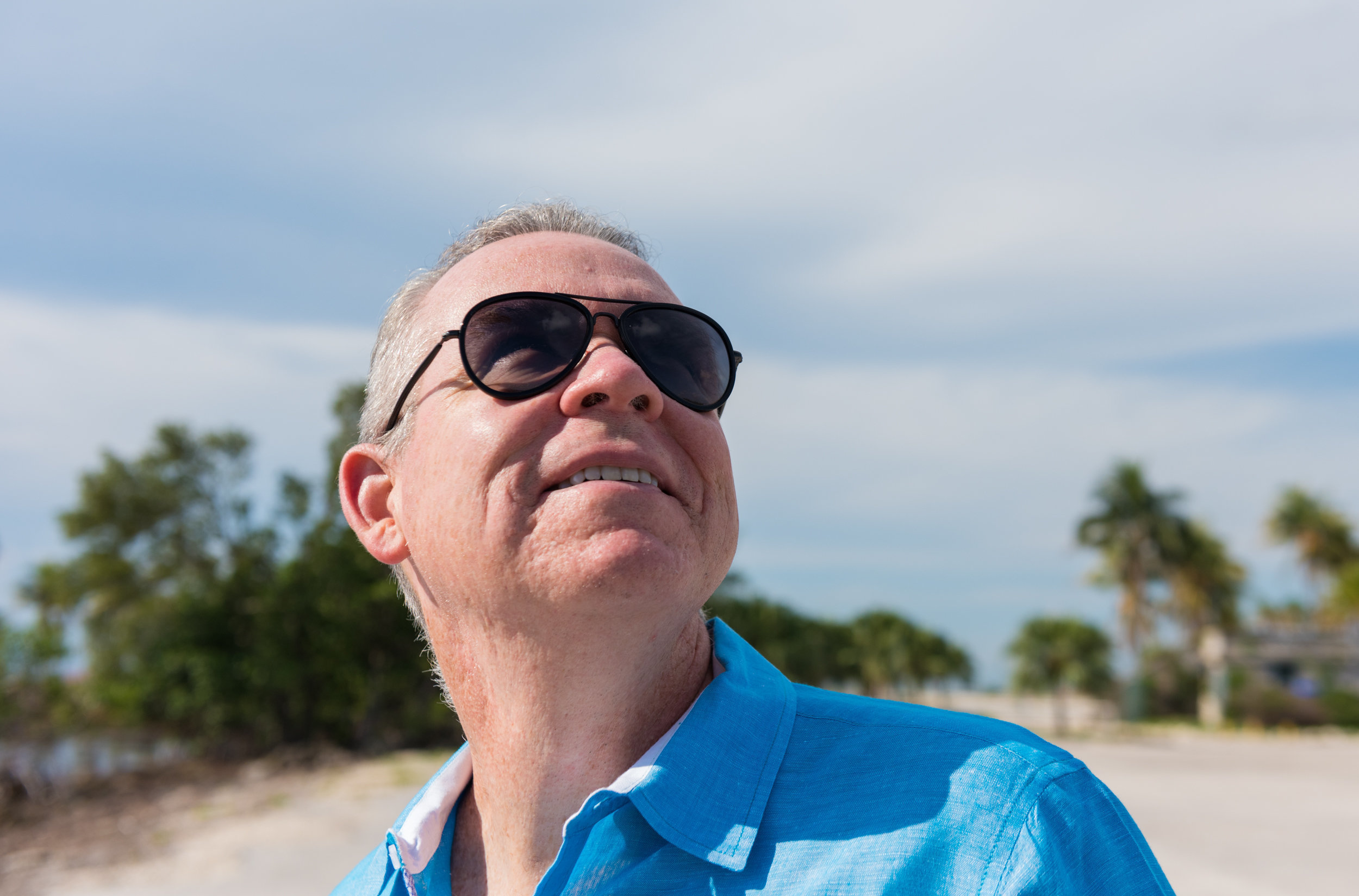
Chris McGonigal / HuffPost
Morales had a knack for communicating on air. He was comfortable on a microphone. When Hurricane Hugo, a Category 3 storm, rampaged through the Caribbean and made landfall in Puerto Rico in September 1989, Morales became the National Weather Service’s de facto spokesperson. His calm, steady tone and clear, accessible narration attracted the attention of the news director at WKAQ, San Juan’s Telemundo affiliate. The job paid half of what he earned at the National Weather Service, so he turned it down.
In 1991, he got an opportunity in Washington, D.C., to serve as the chief of the South American desk at the National Center for Environmental Predictions. But two weeks after he arrived, he got a call from producers at Univision’s Miami station, WLTV, where a friend who followed his appearances as a National Weather Service spokesperson tipped him off to a job. He interviewed, but didn’t hear back, and instead took the gig in Washington. But this time when they called they wanted to offer him an on-camera job. He was just 29.
“They wanted me to answer by the next day, but I said I needed 48 hours,” Morales said. “I made a whole list of pros and cons and decided to chance it and try the TV thing.”
In joining WLTV, Morales became the first degreed meteorologist to regularly appear on Spanish-language television in the United States. Another major advantage of taking that job is that it allowed him to launch the “Spanish-language AccuWeather,” which he had dreamed of starting but couldn’t do as a federal employee. The station agreed to include permission to launch a private forecasting company in his contract, and that same year he launched ClimaData. In 2003, he was hired by WSCV, Miami’s Telemundo station, and made history again as the first Latino to substitute as a meteorologist on NBC’s weekend Today show.
In 2009, he saw a chance to reach a bigger audience by moving to English-language television. He took a pay cut to join WTVJ’s NBC-6, where he’s worked for nearly a decade.
Morales is a fixture at the station.
“John is very well known in South Florida,” said Migdalia Figueroa, Morales’ boss and the vice president of news at WTVJ.
She said the reaction to his climate change coverage is overwhelmingly “positive.”
“We have come a long way, but we have a long way to go; people are still in many circles caught up in this conversation of is it or is it not happening,” said Bernadette Woods Placky, a meteorologist at Climate Central, the Princeton-based nonprofit research outfit.
“That’s where people like John come in. He’s bringing the conversation to a higher level, and that’s what we need more of,” she said. “That’s what these TV meteorologists are in a very unique position to do.”
It’s in the English-speaking world that Morales faced the fiercest climate denialism. More than 8 in 10 Latinos believe global warming is happening, including nearly 9 in 10 Spanish-speaking Latinos, according to data from the Yale Program on Climate Change Communication. Seven in 10 Latinos understand humans are the main cause.
The problem is getting worse. In June, four Republican senators demanded an investigation of the National Science Foundation’s $4 million grant to Climate Matters, a national training and data sharing program run by Climate Central. In a letter sent to the agency’s inspector general, the senators — Ted Cruz (Texas), Rand Paul (Kentucky), James Lankford (Oklahoma) and Jim Inhofe (Oklahoma) — accused the NSF of “propagandizing” and violating the 1939 Hatch Act, which bars government agencies from engaging in partisan activity. All four senators reject the science behind climate change.
The NSF said its staff receives annual ethics training that includes the Hatch Act, and the inspector general said it would “assess the issues raised by the four senators this fall.”
“Communicating the latest scientific trends and happenings is not ‘propagandizing,’” Morales, who does translation work for Climate Matters, said in a series of tweets posted to his more than 70,000 followers. “TV mets are increasingly embracing the subject both on traditional and new media. As the effects of the unequivocal warming continue to spread, it’s become increasingly difficult not to.”
But driving north on Biscayne Boulevard on a recent cloudy afternoon, Morales noted a more calamitous form of denialism. Passing the construction site for One Thousand Museum, the 62-floor, Zaha Hadid-designed colossus, Morales sighed and pointed out nearly half a dozen construction cranes building new luxury residential properties in flood zones.
It’s “the paradox of cities like Miami Beach,” he said, which need the tax base that huge, expensive waterfront buildings provide to spend rapidly growing amounts of money on climate change adaptation.
“There are capitalistic solutions to this, but we must never forget that, while they’re possible in theory, profit is always going to guide all these corporations,” he said. “Folks that are looking for market-based solutions to this issue need to also be realistic.”

Chris McGonigal / HuffPost
Last month, Morales started on a master’s in environmental science and policy from Johns Hopkins University. His application required a mission statement, and that got him pondering his next move after television. It could be in academia, it could be philanthropy, he said.
“It could be politics,” he said. “If the right opportunity arises, I think I have the name recognition and the respect.”
He lives in Florida’s 27th congressional district, where Democrat Donna Shalala, the former Health and Human Services Secretary under President Bill Clinton, is running a tight race against Republican TV personality Maria Elvira Salazar. The retiring incumbent Representative Ileana Ros-Lehtinen is one of the few Republicans in Congress to take climate change seriously — a sign of where the district’s concerns lie.
“I have a lot of respect from my audience as the no-nonsense, just-the-facts guy who tells it like it is,” he said, adding that it’ll be years before he considers a run.
He worries that his son will look back as his generation as “the generation that, out of all the generations of the industrial era of this planet, probably did the most harm to the planet.” He wants his son to see him as “somebody who bucked that trend” and tried to “make a difference to leave a better environment for future generations.” During the week the United Nations released a bleak new report outlining the need to cut still-surging emissions 45 percent in the next 12 years, his words carry extra weight.
“This is a time like no other to be courageous,” he said. “You have to be courageous.”
